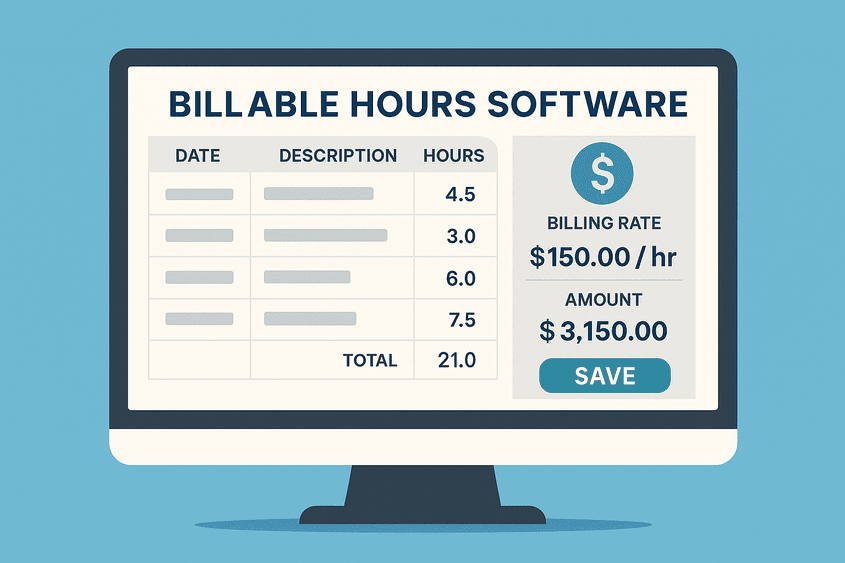What Is Billable Hours Software?
Discover how billable hours software helps professionals track work time, calculate invoices automatically, and streamline billing.

Why Tracking Billable Hours Is Important
When a company introduces a policy of accounting for billable hours, it helps ensure fair compensation, increase client transparency, boost productivity, and improve project management.
Key Features of Billable Hours Software
- Time Tracking
- Billing & Invoicing
- Reporting & Analytics
- Integrations (project management, payment systems)
- Expense Tracking
Who Benefits from Billable Hours Software
- Freelancers
- Agencies & Consultancies
- Law Firms
- Creative Teams
Example: Turning Hours Into an Invoice
In TMetric, invoices are generated from logged time entries and the hourly rates defined for each project, team member, and work type. For example, if an employee works 10 hours at a rate of $50 per hour, 10 × $50 = $500 is automatically added to the invoice.
How TMetric Helps with Billable Hours
TMetric helps with billable hours by giving freelancers, agencies, and businesses clear visibility into where time is spent and ensuring accurate client billing. Here’s how it works:
- Automated Time Tracking
- Easy Invoice Creation
- Integrations with Jira, Trello, Asana
- Convenient Export (PDF, Excel, CSV)
Billable Hours Software vs. Timesheets vs. Productivity Tools
Let’s take a quick look at how Billable Hours Software, Timesheets, and Productivity Tools differ to understand their purposes and prevent confusion.
- Billable Hours Software - Focuses on tracking work that can be invoiced, linking time directly to projects, clients, and rates.
- Timesheets - A general record of hours worked, which may or may not be billable, often used for payroll or attendance.
- Productivity Tools - Help monitor tasks, deadlines, and efficiency, but don’t necessarily track billable time or generate invoices.



